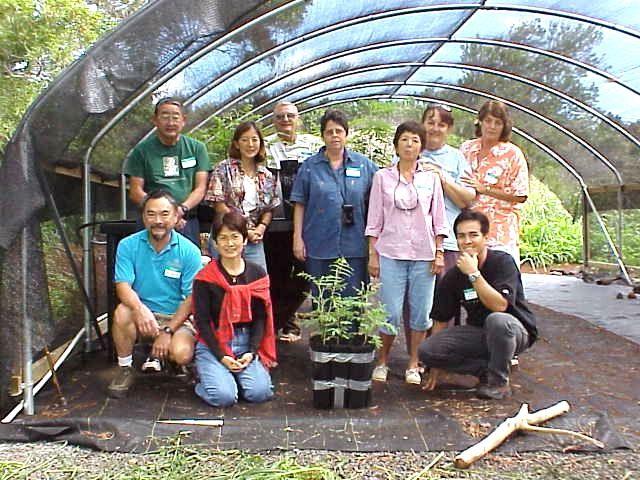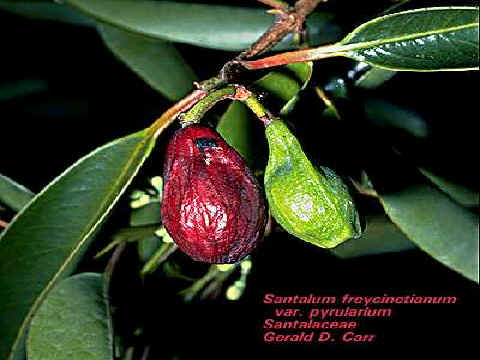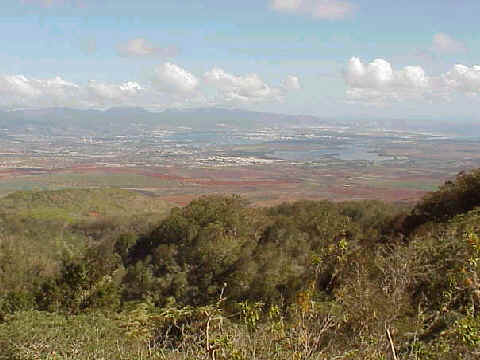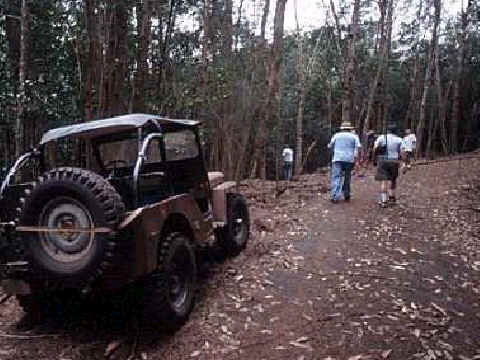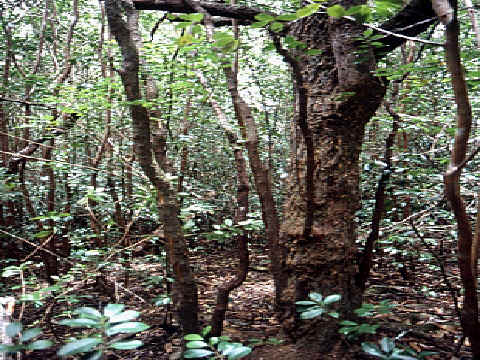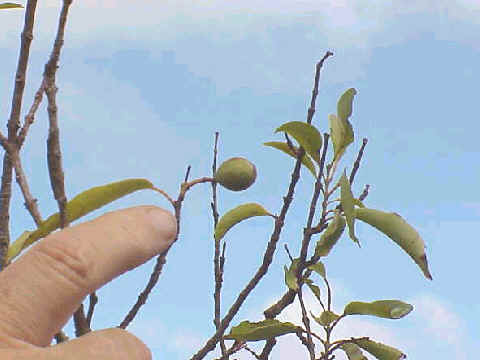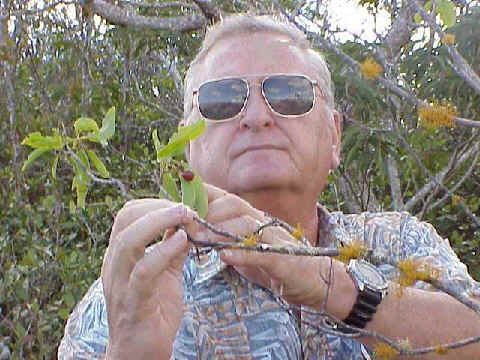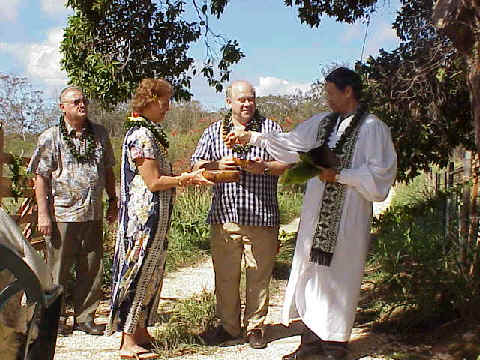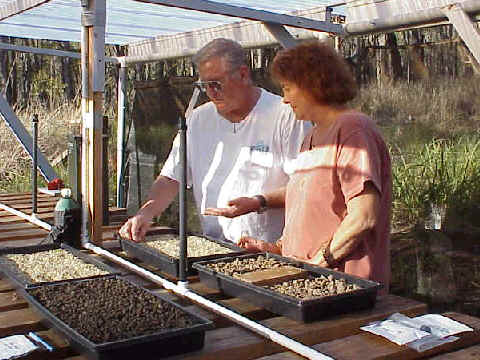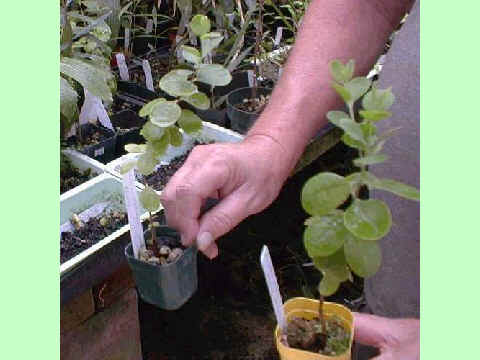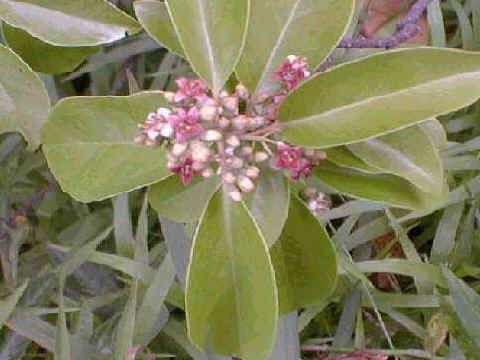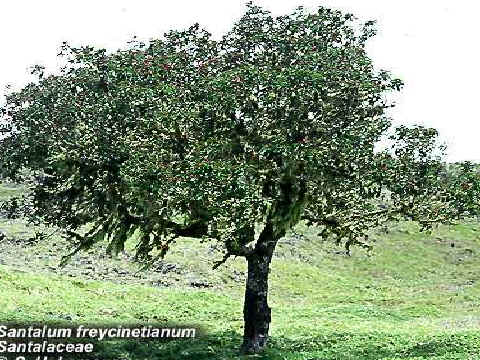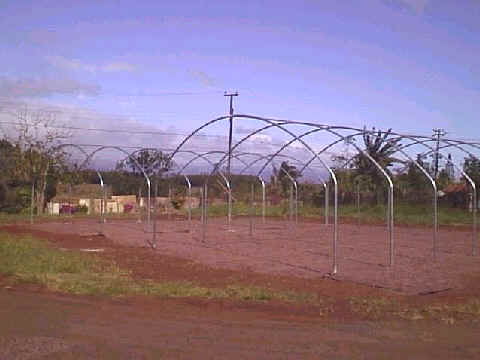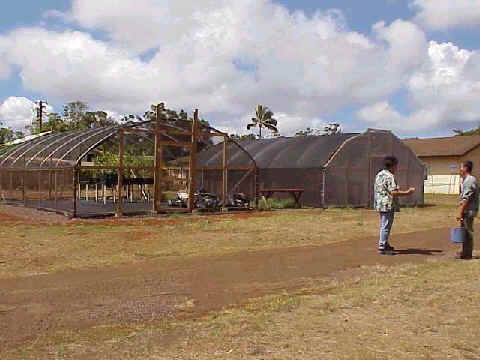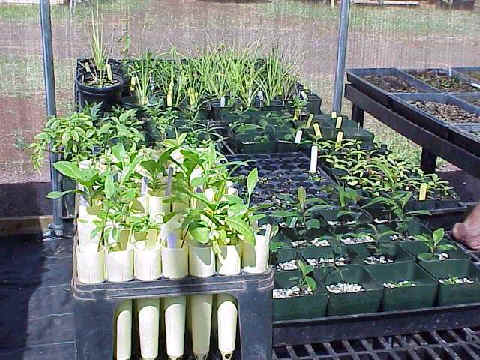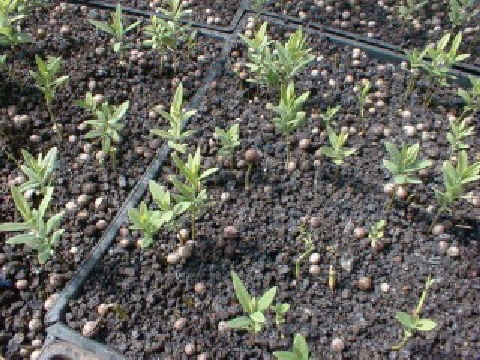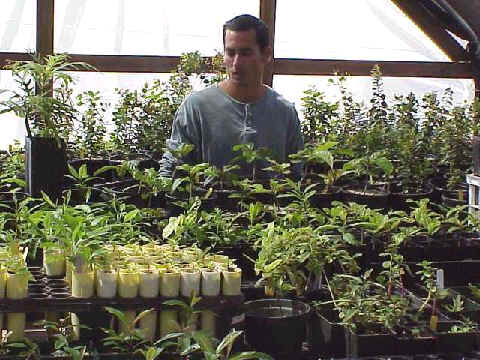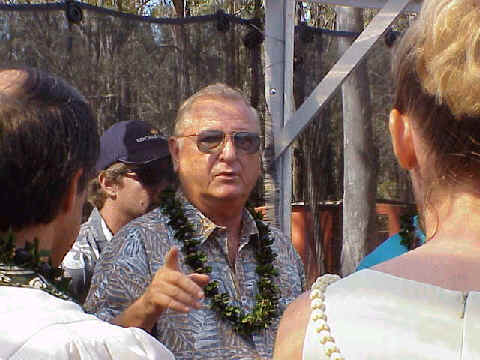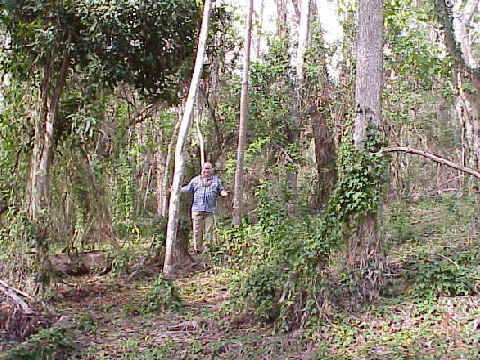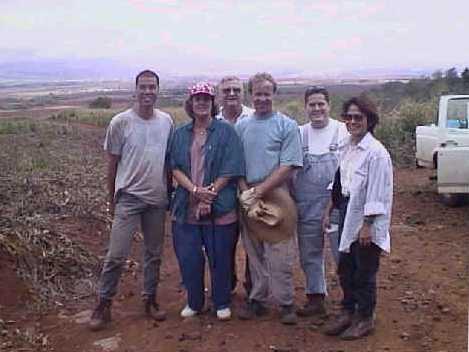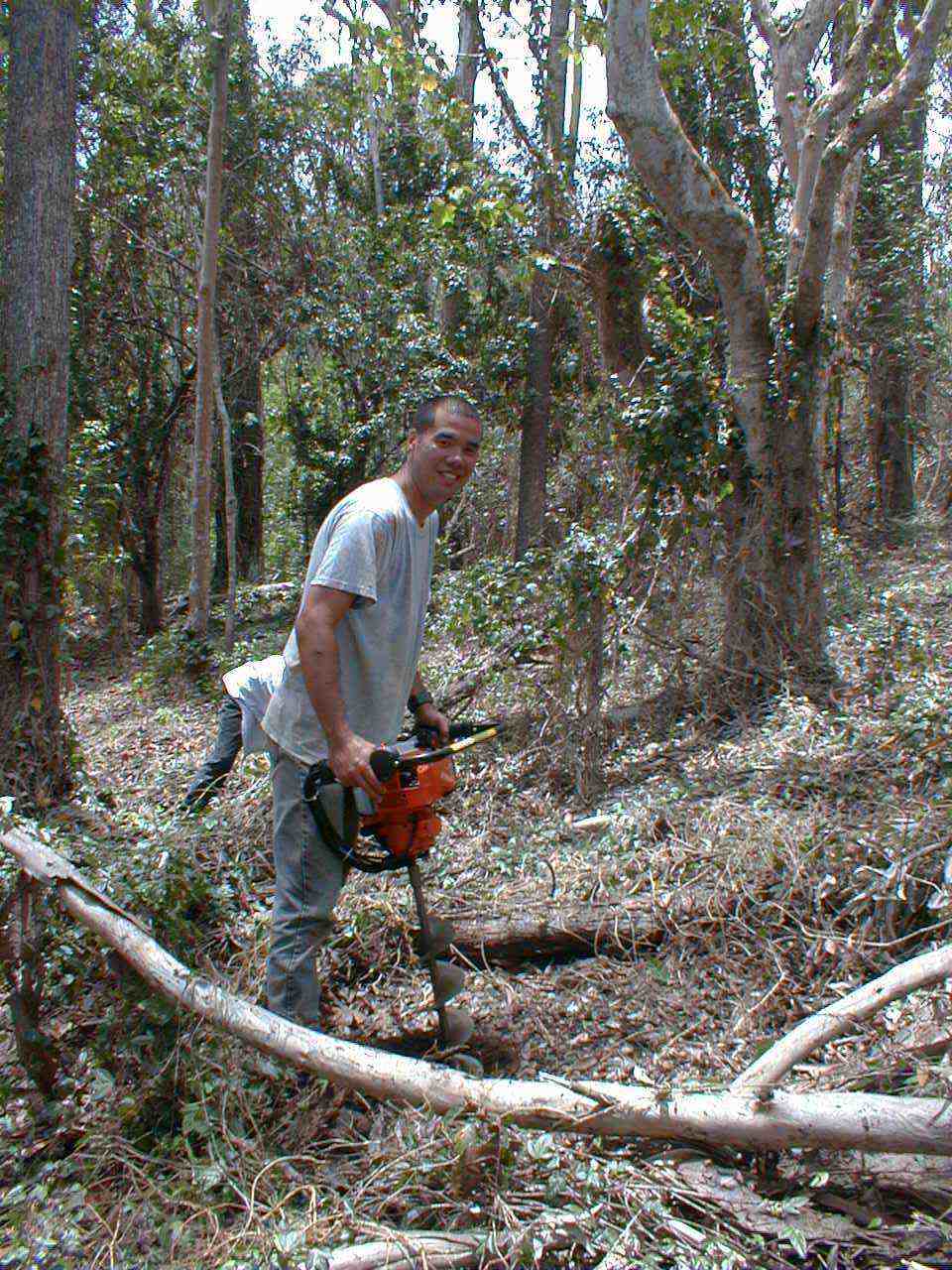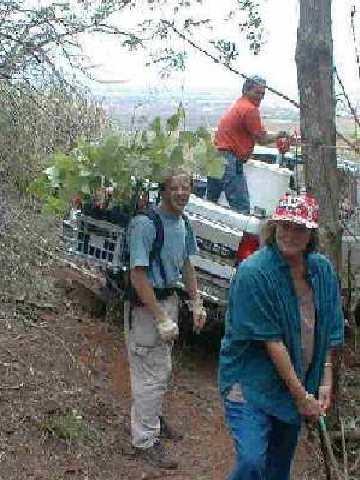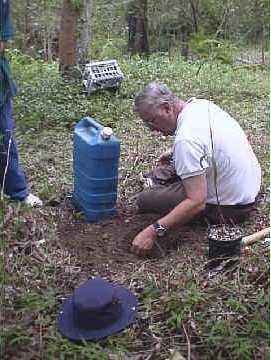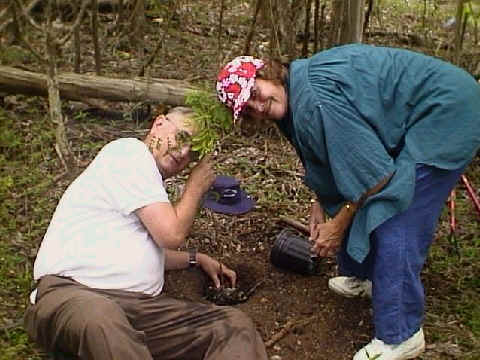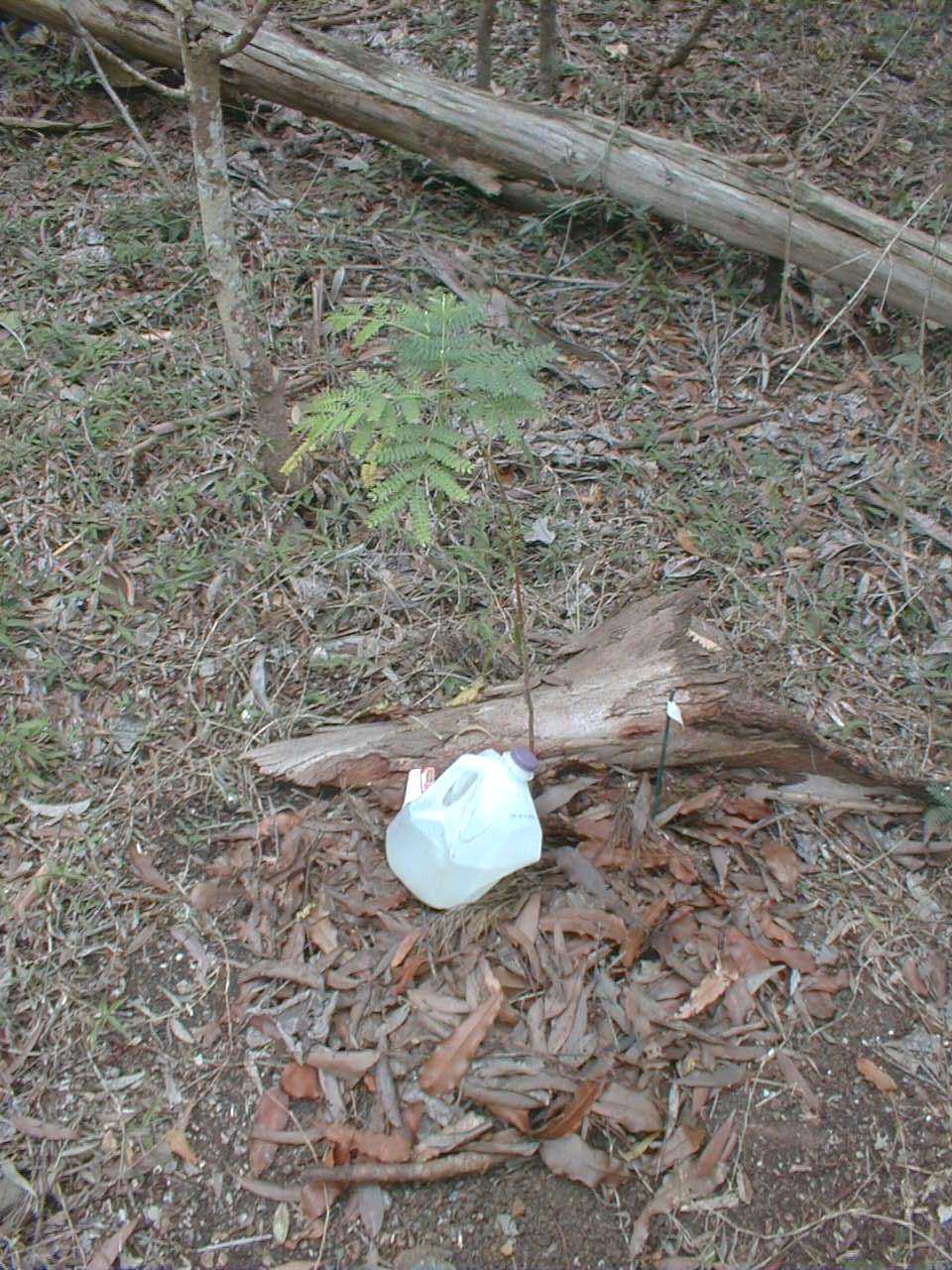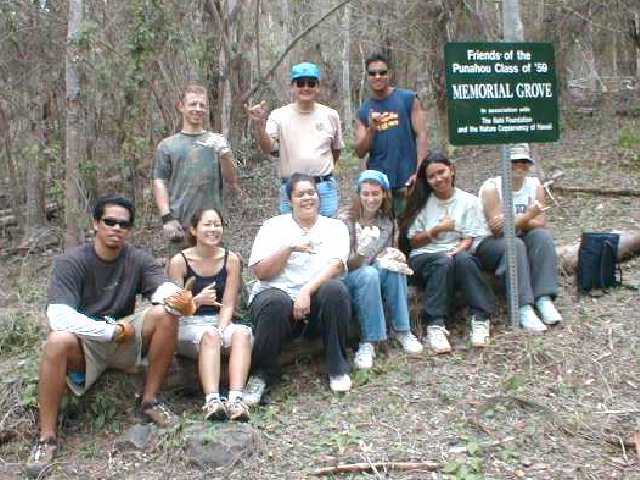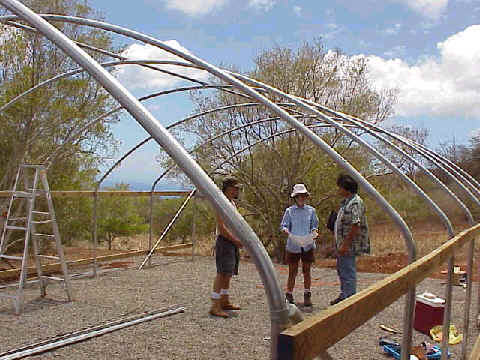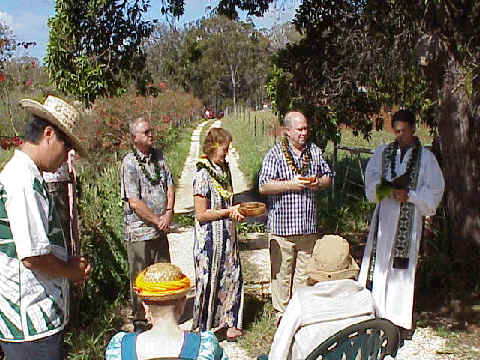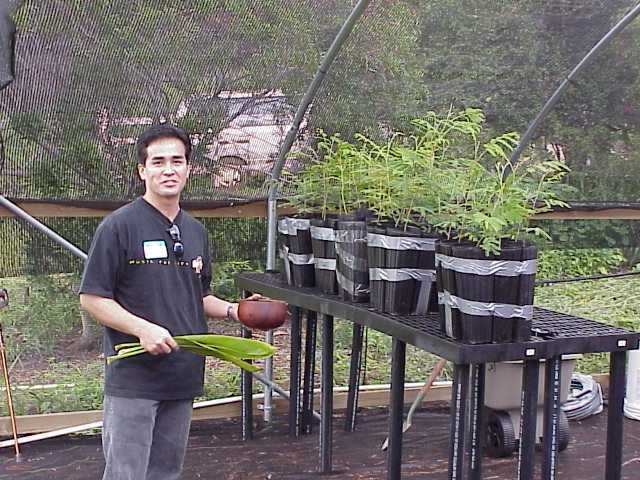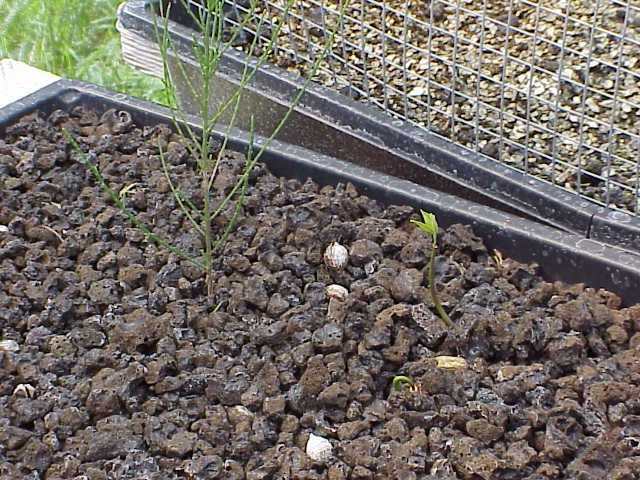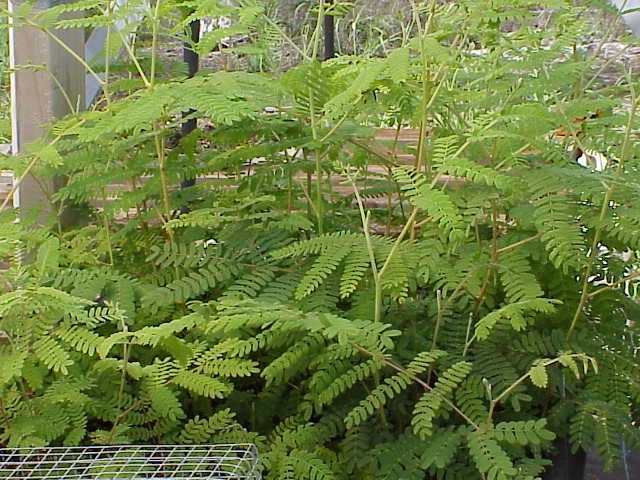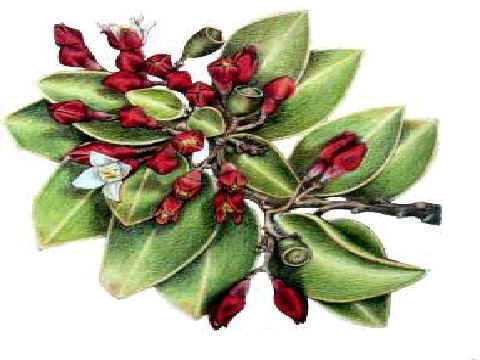The Iliahi Foundation of Hawai'i
Our Story in Photos
|
|
Friends of the Iliahi Foundation
|
|
1) Blossoms, fruit and seeds of our namesake, the Iliahi sandalwood tree.
|
|
2)
Iliahi seeds turn purple when mature.
Photo images of live Iliahi species as this one made us determined to
discover our own Iliahi seed sources on Oahu.
|
|
3)
Our search for Iliahi seeds led us into the Palehua area of the southeastern
Waianae Mountain of Oahu where informed sources told us we could find Iliahi
trees. This photo looks eastward over the Honouliuli Nature Preserve towards
Pearl Harbor and Honolulu from the top ridge line of the Waianae mountains where
several seed producing Iliahi “frey” species trees have been found.
Diamond Head is in the faint far distance.
|
|
4)
Finding precious Iliahi seeds to plant involves extensive on and off trail
hiking back into the Koolau and Waianae Mountains of Oahu.
Here a search team sets out by foot into the Waianae wilderness guided by
McD Philpotts, a local resident, naturalist and wood sculptor who had
encountered Iliahi in years past in the Palehua area.
|
|
5) Our initial find of an old growth
Iliahi “frey” species tree grove presented this ominous sight. This large
Iliahi mother tree (100 years old est.) and her 15 surrounding saplings that
have sprouted off of sucker roots up to 30 feet away, have all been recently
smothered to death by invasive strawberry guava, a non-indigenous species that
is rapidly over-running the indigenous Iliahi and other indigenous trees in the
upper Waianae mountains.
|
|
6) Informed sources led us
to an area with live Iliahi “frey” trees bearing live flowers and fruit. This green Iliahi seed was found on top of the wind swept
ridge of the Waianae mountain range of western Oahu. It will be closely watched
until it matures to a deep purple. Then it will be picked and taken to the
Iliahi nursery in Palehua where it will be planted and germinated using one of
our scientific methods.
|
|
7) Jimbo locates another single Iliahi seed (red and soon to mature to a purple color) in the same area high up on the windswept ridgeline of the Waianae Mountains of southwest Oahu. Note the koa tree in the background on the right hand side. Iliahi often share the same areas with koa because Iliahi are symbiotic and parasitic and need interactions with the root systems of other species of trees in order to thrive. They seem to especially flourish with koa in the immediate area. Invasive strawberry guava bushes on the left are beginning to invade the area.
|
|
8). Judith Flanders holds the purified water and Jon Larson holds native Hawaiian rock salt in koa bowls while Jim Haley and others witness the cleansing ceremony and blessing of the Iliahi Foundation leadership team. The blessing ceremony was witnessed by friends of the Iliahi Foundation.
|
|
9) Kahu Rev. James Fung performs a ceremonial blessing service to purify the new keiki nursery #1 built by the Iliahi Foundation near the initial Iliahi seed sources in Palehua. Cyrus Siu holds the Hawaiian rock salt and Jon Larson holds the purified water while Kahu holds the three Ti leaves while reciting scripture and words appropriate to the special occasion of the opening of our first native plants nursery. Note the traditional lei of intertwined Maili leaves crossing the opening to the nursery. At the end of the ceremony, the lei is carefully parted at the middle.
|
|
10)
Jimbo Haley and Judith Flanders carefully place Iliahi seeds into special trays
with differing media to scientifically determine the ideal method to germinate
the Iliahi seeds. The Iliahi seeds have been pretreated with gibberellic acid, a
plant hormone that is being evaluated for contributing to a faster and a higher
rate of germination. The light crushed rock is vermiculite and the darker brown
rock in the flat on the right contains special cinder cone gravel brought over
from a place on the Big Island where another species of Iliahi that are unique
to the Big Island called paniculatum, is known to be flourishing. The
darkest tray in front is crushed black volcanic cinder. The different planting
mediums are being evaluated scientifically to determine which ones yield the
best results. One of the techniques
being evaluated to speed germination of Iliahi seeds is to crack them open long
ways in a vise before they are planted.
|
|
11) Iliahi takes 2-12 months to germinate from seed. The plants will be carefully handled in the nurseries for 2-3 years. They are transplanted several times into larger holding pots with differing soil before they are large enough to be out-planted. These Iliahi plants growing in University of Hawaii’s Lyon Arboritum greenhouse are the more common elipticum bush variety found at lower altitudes and at sea level. The “frey” tree species of most interest to us are upland dry forest sandalwood trees that grow above 1000’ in the dryer areas of the mountains.
|
|
12)
Here is an adult lowland species of Iliahi, a more common bush variety with pink
blossoms and smaller seeds that are common at lower altitudes.
|
|
13)
This photo shows a mature Iliahi tree of the Santalum freycinetianum “frey”
species which are still found in small numbers on Oahu, Kauai and Maui.
The Big Island has its own unique species of Iliahi called paniculatum.
The island of Lanai has its own variety of sandalwood, lanaiense, which
is federally listed as endangered.
|
|
14) The Iliahi Foundation has gifted two large native plant nurseries to The Nature Conservancy of Hawaii. Here they are under construction at the Kunia site.
|
|
15) Prefabricated in Oregon and shipped to Honolulu, these two large nurseries will grow native plants for outplanting in the 4,000 acre Honouliuli Nature Preserve located nearby.
|
|
16)
The first two native plant nurseries are already producing hundreds of maturing
trees for outplanting.
|
|
17)
Seeds are sprinkled on top of the rocky soil used to germinate indigenous seeds,
similar to the rocky ground upon which they germinate in the wild.
|
|
18)
The first two native plant nurseries are already producing hundreds of maturing
trees for outplanting. TNC staff members carefully nurture native plant
seeds from flats and small pots and transfer them into larger deeper pots for
continued growth until ready for outplanting.
|
|
19)
Education is an important part of our mission.
Here Jimbo leads a tour group through the Palehua nursery and explains
the process by which native plant seeds are gathered, germinated, and nurtured
for outplanting.
|
|
20) Jon Larson walks through the Honouliuli Nature Preserve in the area designated by The Nature Conservancy for restoration with Iliahi and other native trees and plants by the Friends of the Iliahi Foundation including Punahou ’59 alumni working with other Iliahi Foundation friends to out-plant and tend an entire forest of indigenous Hawaiian plants and trees. Note the light green leaves of huge kukui trees (introduced by native Hawaiians) providing shade, and the dark green macadamia nut tree, also an introduced species. Other invasive introduced eucalyptus trees and introduced vines and ground cover will be selectively removed from the area and replaced over the years with indigenous plants and trees.
|
|
21) Any non-profit organization depends heavily on volunteers to do the day to day work. Volunteers enjoy the opportunity to work out of doors with other good hearted people determined to give back to the environment by joining in the hard work of outplanting groves of native trees. Here a group assembles for a days work tending to our young trees at Honouliuli Nature Preserve in the Waianae Mountains. Left to right: Nat Pak, Judith Flanders, Jim Haley, Todd Ware, Matthew Haley and Phyllis Murakami-Siu.
|
|
22) Nat uses a power auger to dig the holes for new plantings.
|
|
23) Competing non-native plants in the immediate area are removed by Matt with a heavy duty weed puller.
|
|
24) Both plants and a portable water system must be carried to the planting area. Here Judith guides the irrigation pipe while McD pumps water from the supply on the back of his truck. Todd loads up a supply of healthy wiliwili tree plantings supplied from the native plants nursery and carries them to the planting area.
|
|
25) New plants require water until they become established enough to survive on their own. During this period of drought in Hawaii, extra water is required. It is all hand carried to the site.
|
|
26) A koa tree is planted by Jimbo Haley and Judith Flanders.
|
|
27) A recently planted koa tree shows signs of new growth, a sure sign it is well planted and tended and on its way to survival and continued growth to a permanent place in the native plants grove within Honouliuli Nature Preserve where it will be seen by all who visit the area. A temporary plastic container drips water to the roots. It must be refilled every 2-3 weeks.
|
|
28) Friends of the Iliahi Foundation, Chamindae University students led by Iliahi Foundation steering committee member Professor Ron Iwamoto, volunteer their time and energy clearing and outplanting native trees within the Honouliuli Nature Preserve.
|
|
29) We recently started construction on our second native plants nursery at 1600’ elevation in Palehua, Oahu. Here the bright sun shines all day and in the background are Formosan Koa tree, ideal companions for Iliahi sandalwood trees which will be planted in the area. Iliahi grow best when their roots can mingle with other species. Koa appears to be their favorite. Cy and Phyllis Siu review the plans with Shane Eagleton.
|
|
30) Reverend Dr. James Fung, pastor of Kawaiahao Church of Honolulu performs a traditional purification ceremony and blessing of the lands upon which Iliahi seeds are being found, where our first native plants nursery has been built, and where more Iliahi plants that germinate in our nursery will be out-planted among existing koa in the area on the left. This blessing ceremony mixes fresh water purified with Hawaiian rock salt which is then sprinkled on the blessing site and among those in witness with the traditional three Ti leaves. This ceremony is intended to purify the surrounding land and manmade structures as well as the minds and hearts of the leaders who will manage the enterprise for the public good.
|
|
31) Mike Kahue, Youth Programs director of the Friends of the Iliahi Foundation conducts a traditional Hawaiian consecration ceremony for our fourth native plants shadehouse, the second one at Palehua.
|
|
32) Here in the right foreground are some small but healthy Iliahi trees with new growth, growing wild in the forest on the wind-swept ridgeline of the southern Waianae mountains at about 2,000 feet altitude. Seeds taken from this area will be germinated in the nurseries and eventually out-planted within special pre-designated areas within the Honouliuli Nature Preserve managed by The Nature Conservancy of Oahu for specific purposes of protecting and maintaining native forestation. This view looks north from the southern end of the 4,000 acre Honouliuli Nature Preserve towards Kunia and Wahiawa. The Koolau mountain range is in the far background.
|
|
33) Friends of the Iliahi Foundation include (from left to right) McD Philpotts, craftsman, designer, woodturner and member of the Steering Committee of the Iliahi Foundation, Cyrus Siu, co-founder and Director of the Iliahi Foundation and CFO of the Oceanic Institute of Hawaii, Pauline Sato, Oahu Program Director of The Nature Conservancy of Hawaii and member of the Steering Committee of the Iliahi Foundation, Jim Haley, co-founder and director of the Iliahi Foundation and manager of Oahu operations, Judith Flanders, co-founder and Chairperson of the Iliahi Foundation’s Steering Committee, and Jon Larson, co-founder and director of the Iliahi Foundation.
|
|
34) Here in the right foreground are some small but healthy Iliahi trees with new growth, growing wild in the forest on the wind-swept ridgeline of the southern Waianae mountains at about 2,000 feet altitude. Seeds taken from this area will be germinated in the nurseries and eventually out-planted within special pre-designated areas within the Honouliuli Nature Preserve managed by The Nature Conservancy of Oahu for specific purposes of protecting and maintaining native forestation. This view looks north from the southern end of the 4,000 acre Honouliuli Nature Preserve towards Kunia and Wahiawa. The Koolau mountain range is in the far background.
|
|
35) The first two iliahi seeds to germinate in Palehua Shadehouse #1. Note the presence of an unplanned ironwood seedling that blew into the shadehouse. Could this be further confirmation that iliahi are symbiotic with other species, even at the germination level?
|
|
36) Our first batch of koa plantings nurtured in our Palehua shadehouses is ready for outplanting at Honouliuli Nature Preserve.
|
|
37) The logo and namesake of The Iliahi Foundation of Hawaii remains the Iliahi (Hawaiian sandalwood) tree. The beautiful leaves, blossoms and fruit of the Iliahi signify to us the importance of our mission to awaken and nurture veneration in all of us regarding the heritage of Hawaii's history, land and its people through its indigenous native species of trees.
